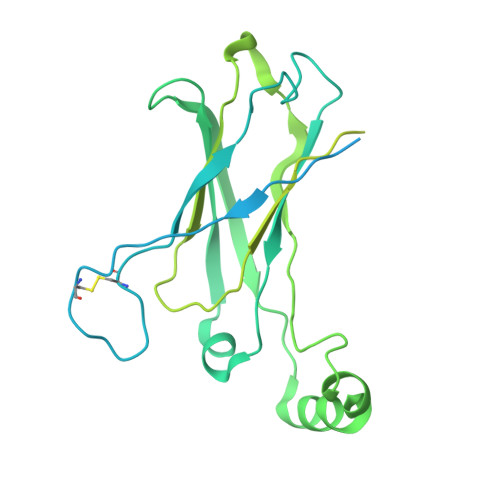Human SEIPIN Binds Anionic Phospholipids.
Yan, R., Qian, H., Lukmantara, I., Gao, M., Du, X., Yan, N., Yang, H.(2018) Dev Cell 47: 248-256.e4
- PubMed: 30293840
- DOI: https://doi.org/10.1016/j.devcel.2018.09.010
- Primary Citation of Related Structures:
6DS5 - PubMed Abstract:
The biogenesis of lipid droplets (LDs) and the development of adipocytes are two key aspects of mammalian fat storage. SEIPIN, an integral membrane protein of the endoplasmic reticulum (ER), plays a critical role in both LD formation and adipogenesis. The molecular function of SEIPIN, however, has yet to be elucidated. Here, we report the cryogenic electron microscopy structure of human SEIPIN at 3.8 Å resolution. SEIPIN exists as an undecamer, and this oligomerization state is critical for its physiological function. The evolutionarily conserved lumenal domain of SEIPIN forms an eight-stranded β sandwich fold. Both full-length SEIPIN and its lumenal domain can bind anionic phospholipids including phosphatidic acid. Our results suggest that SEIPIN forms a scaffold that helps maintain phospholipid homeostasis and surface tension of the ER.
Organizational Affiliation:
Tsinghua-Peking Joint Center for Life Sciences, Beijing Advanced Innovation Center for Structural Biology, State Key Laboratory of Membrane Biology, School of Life Sciences and School of Medicine, Tsinghua University, Beijing 100084, China.















